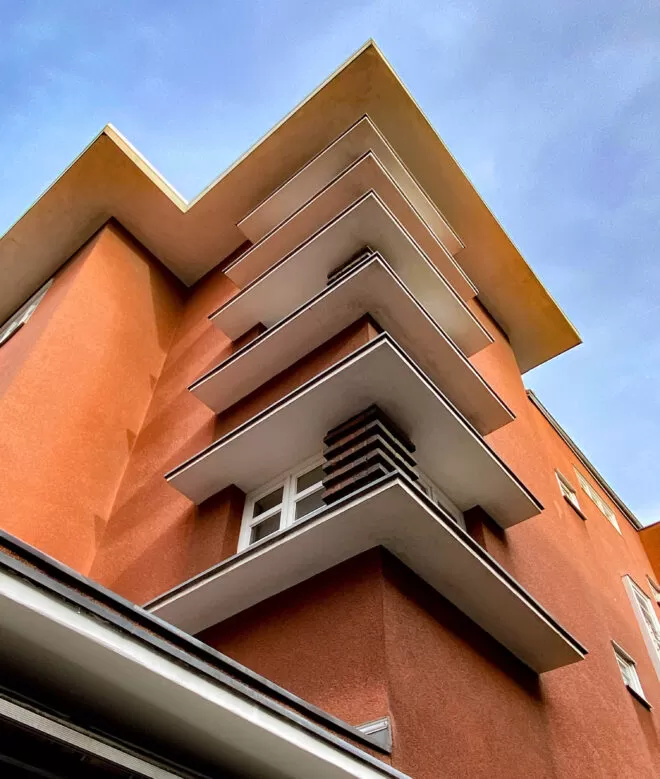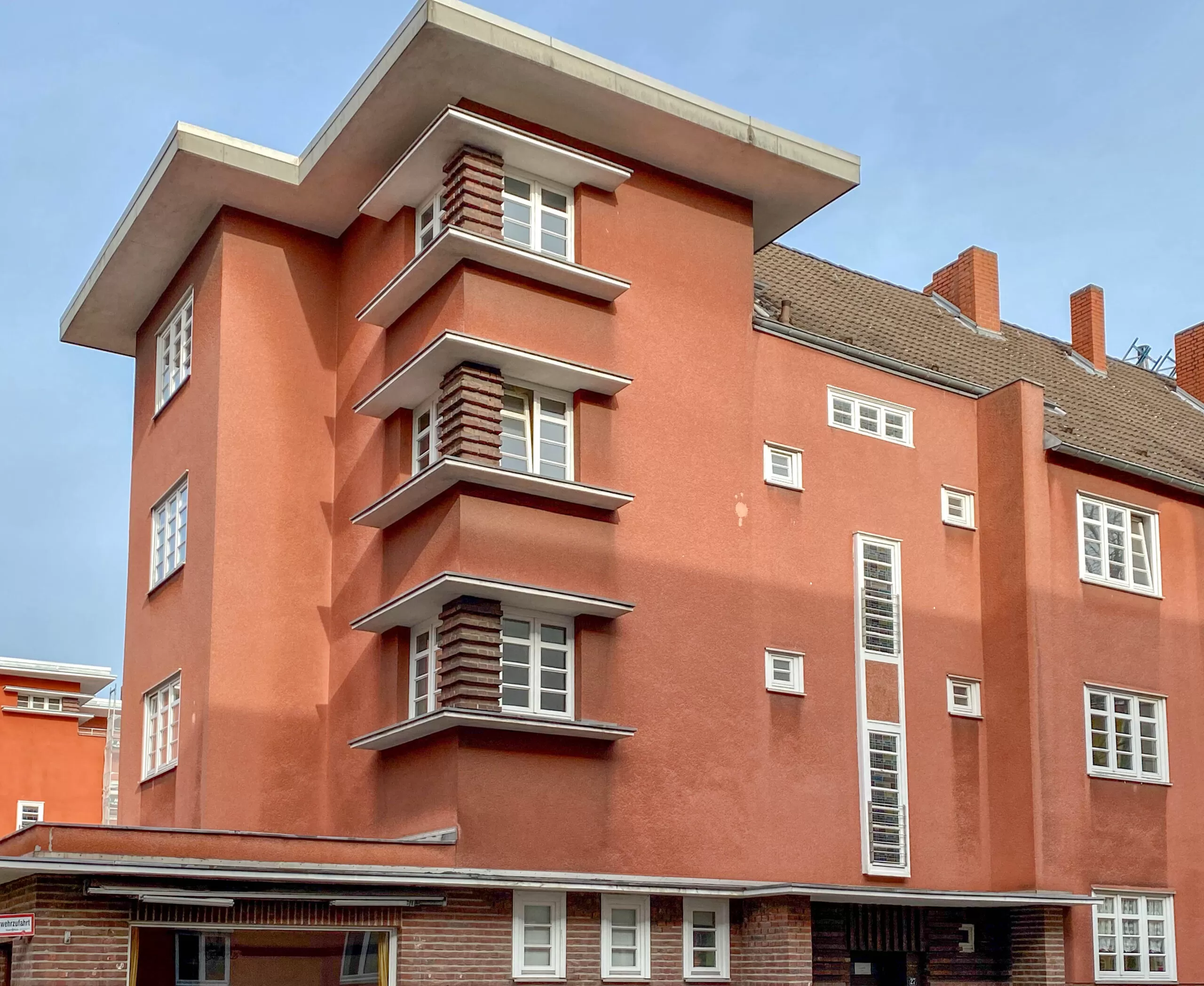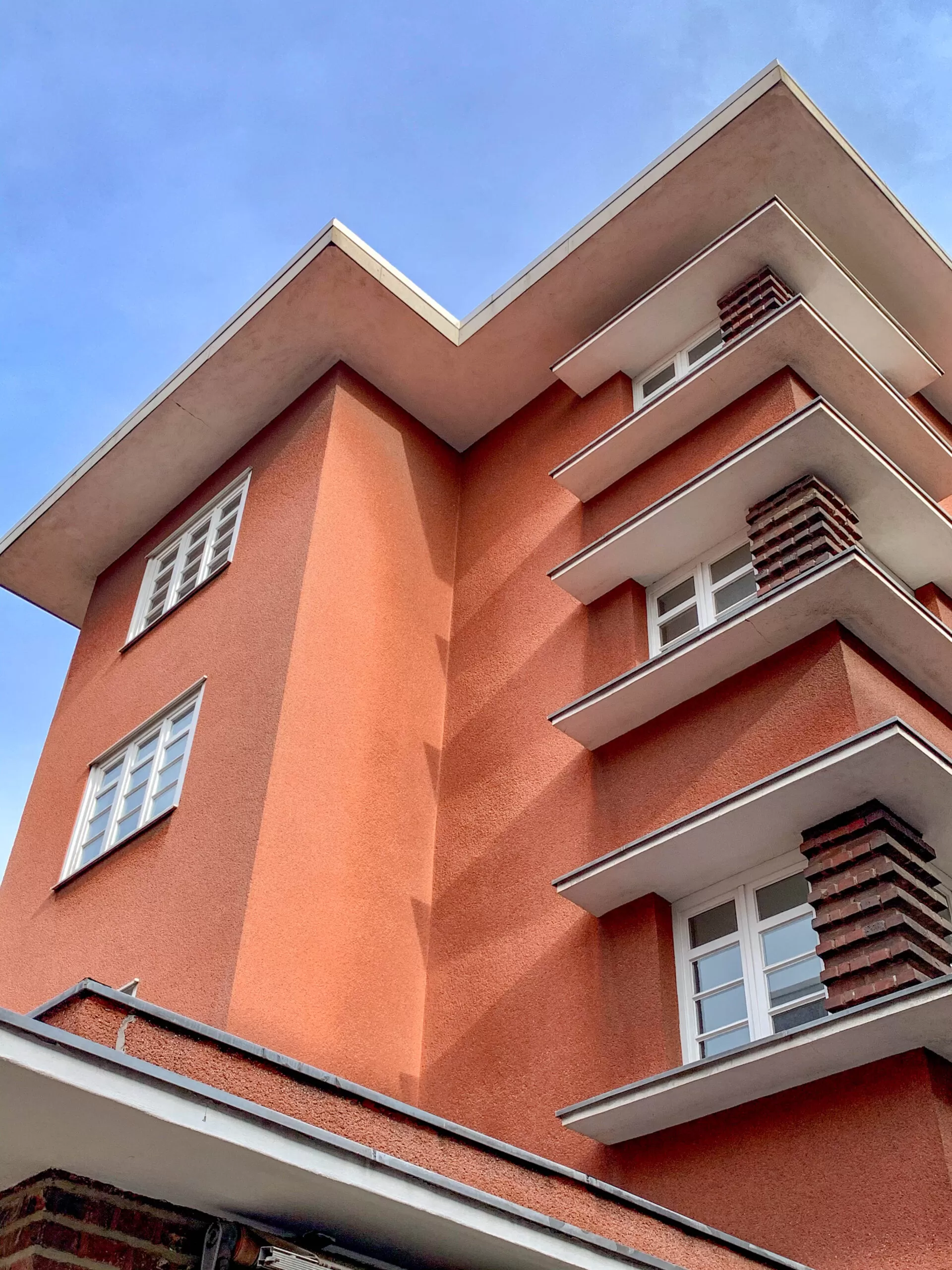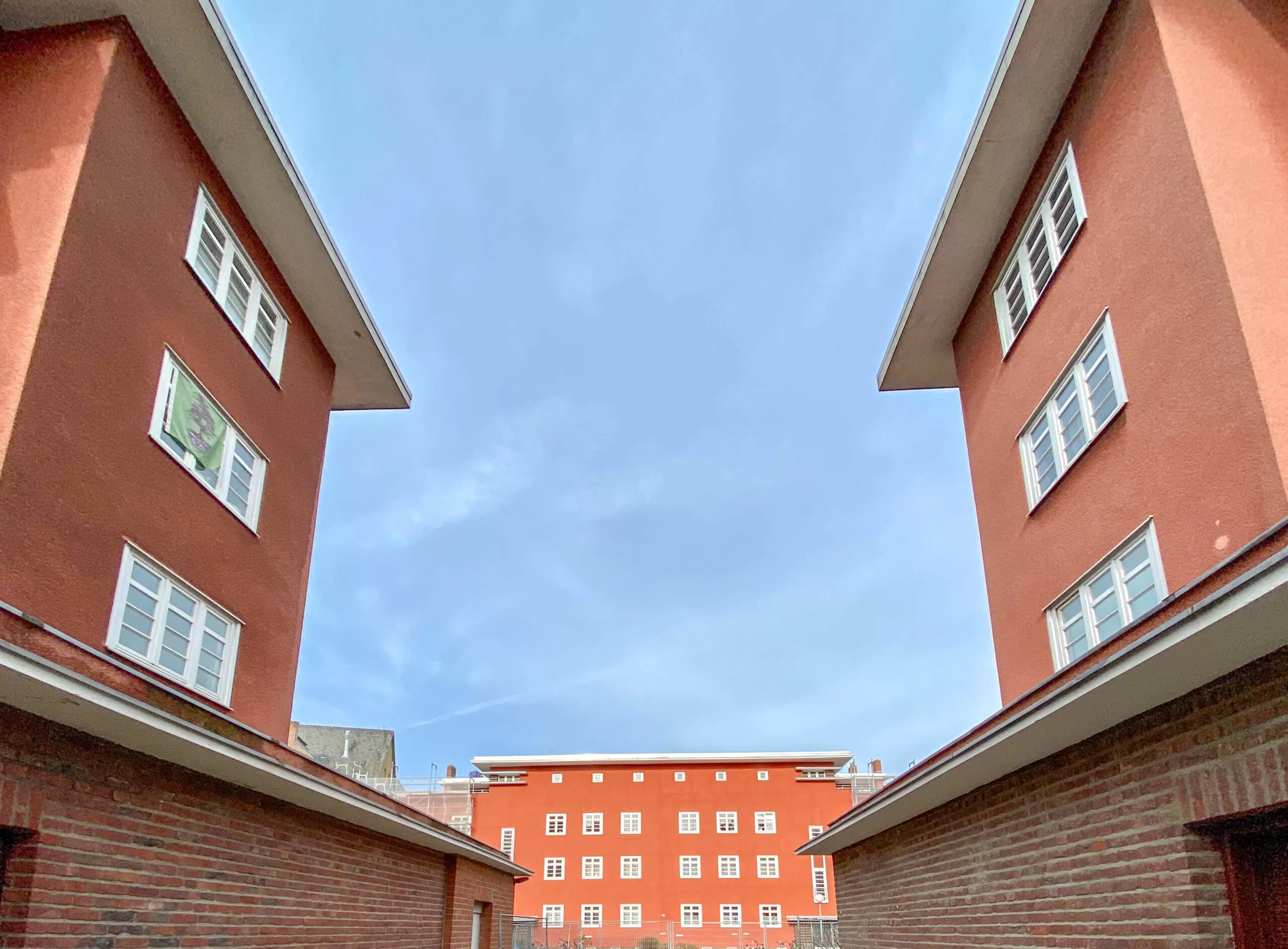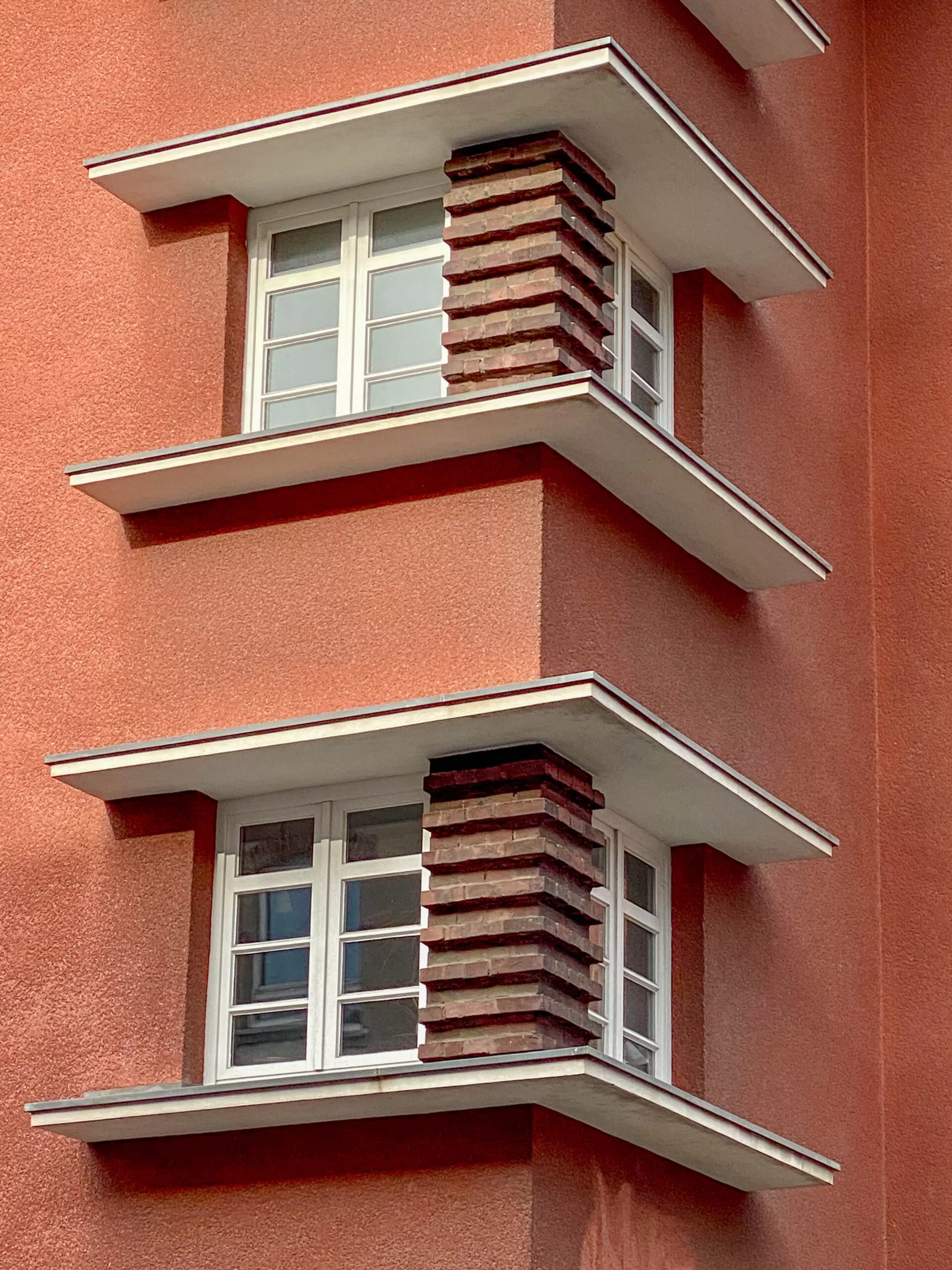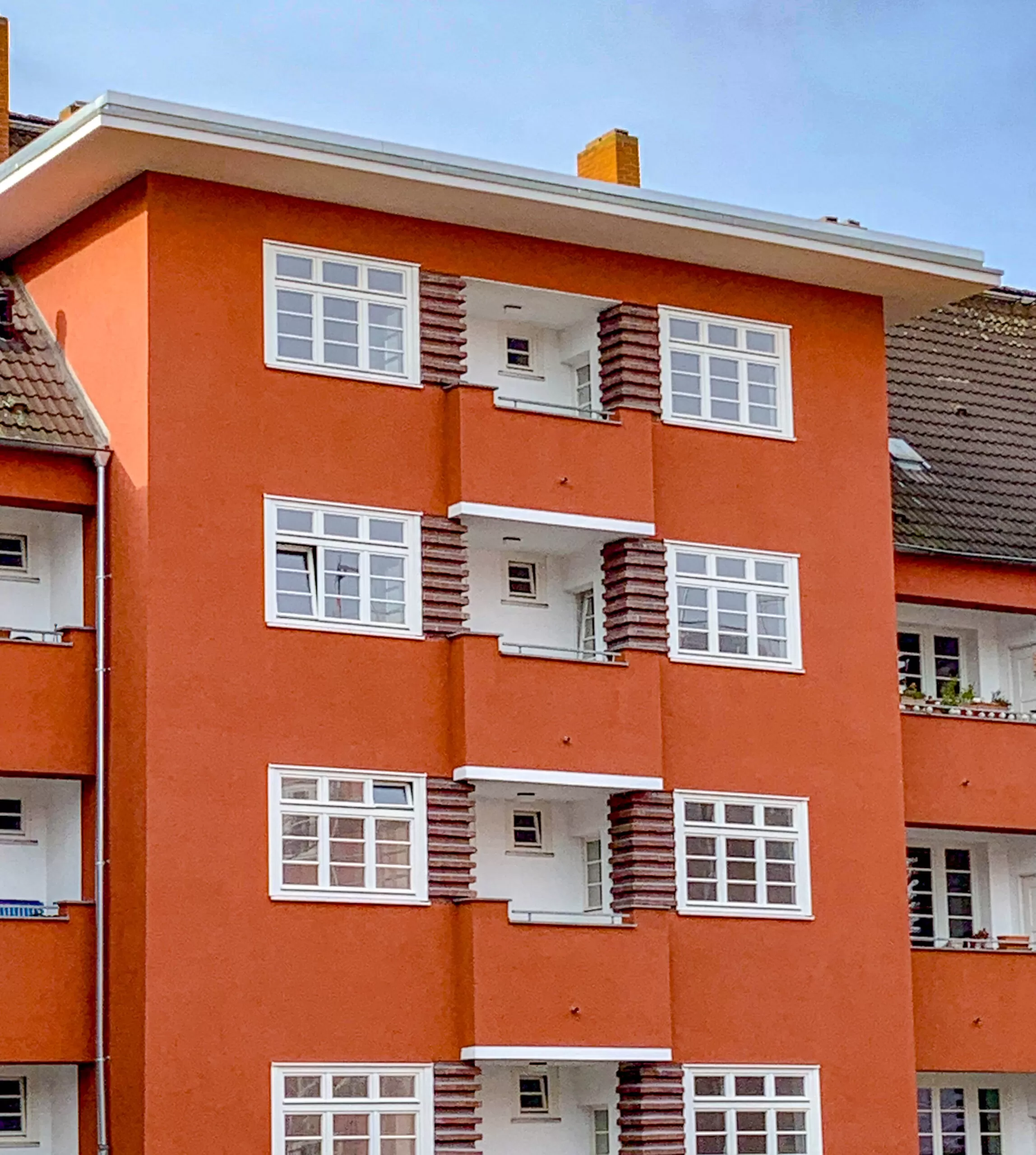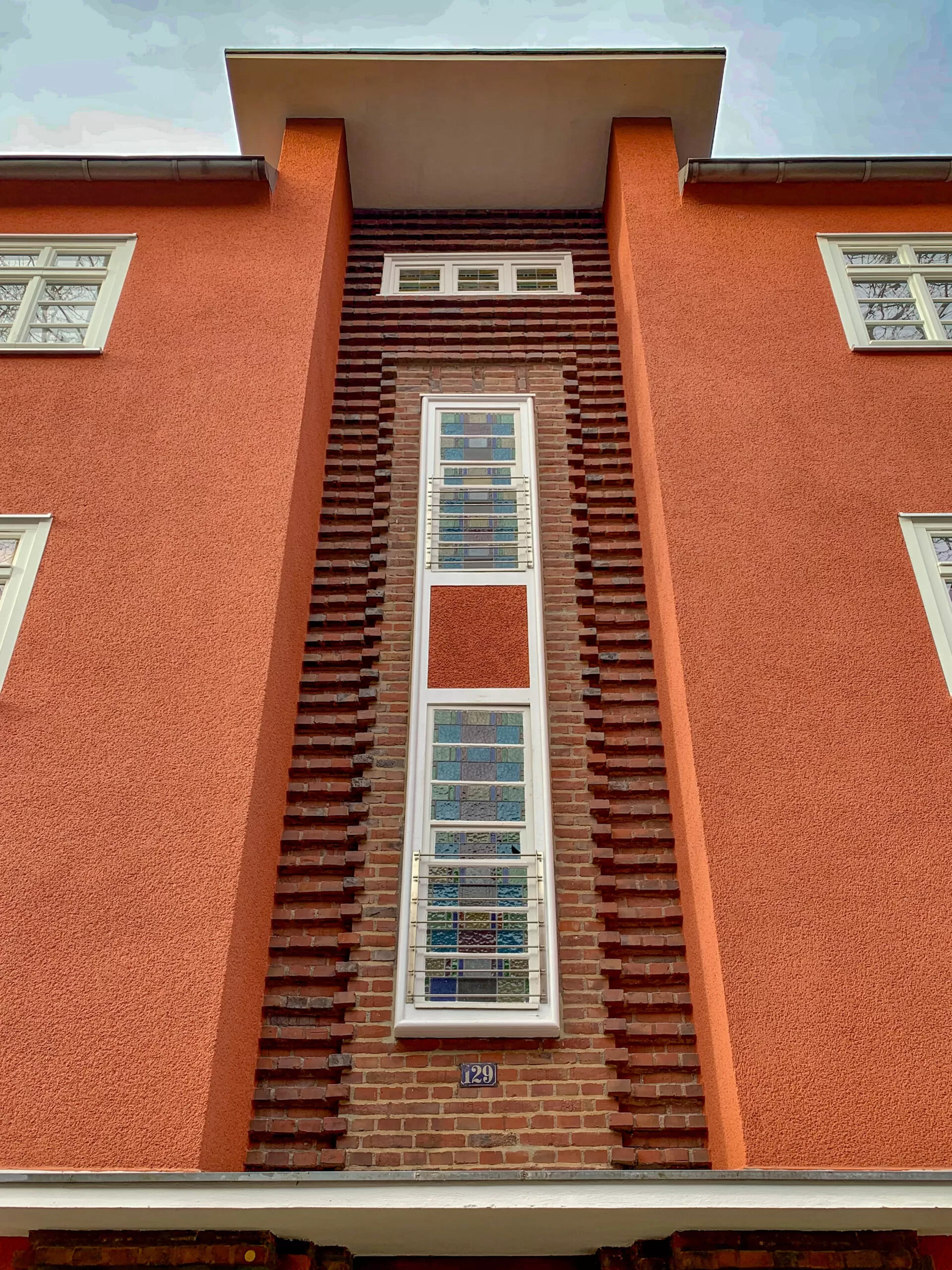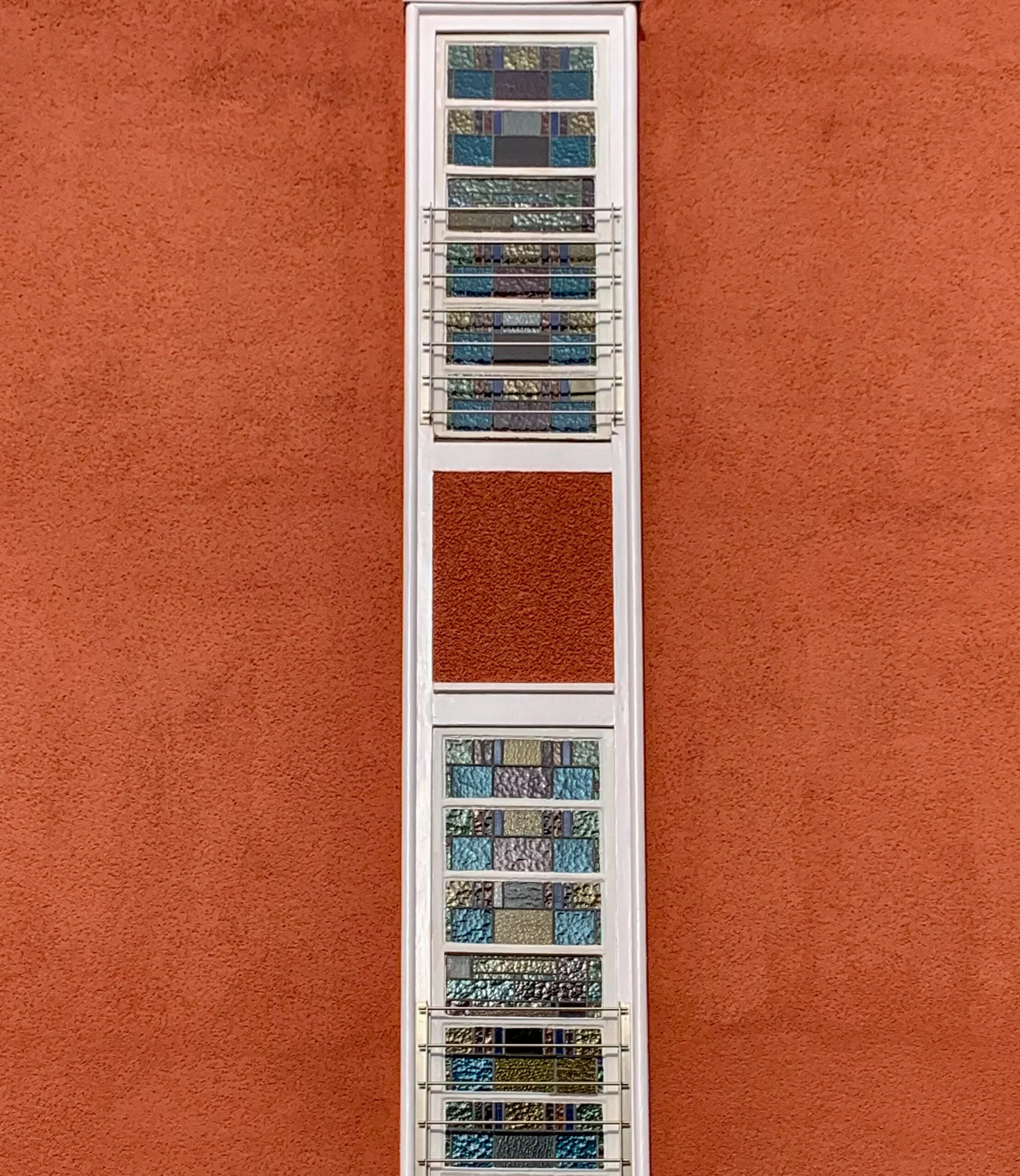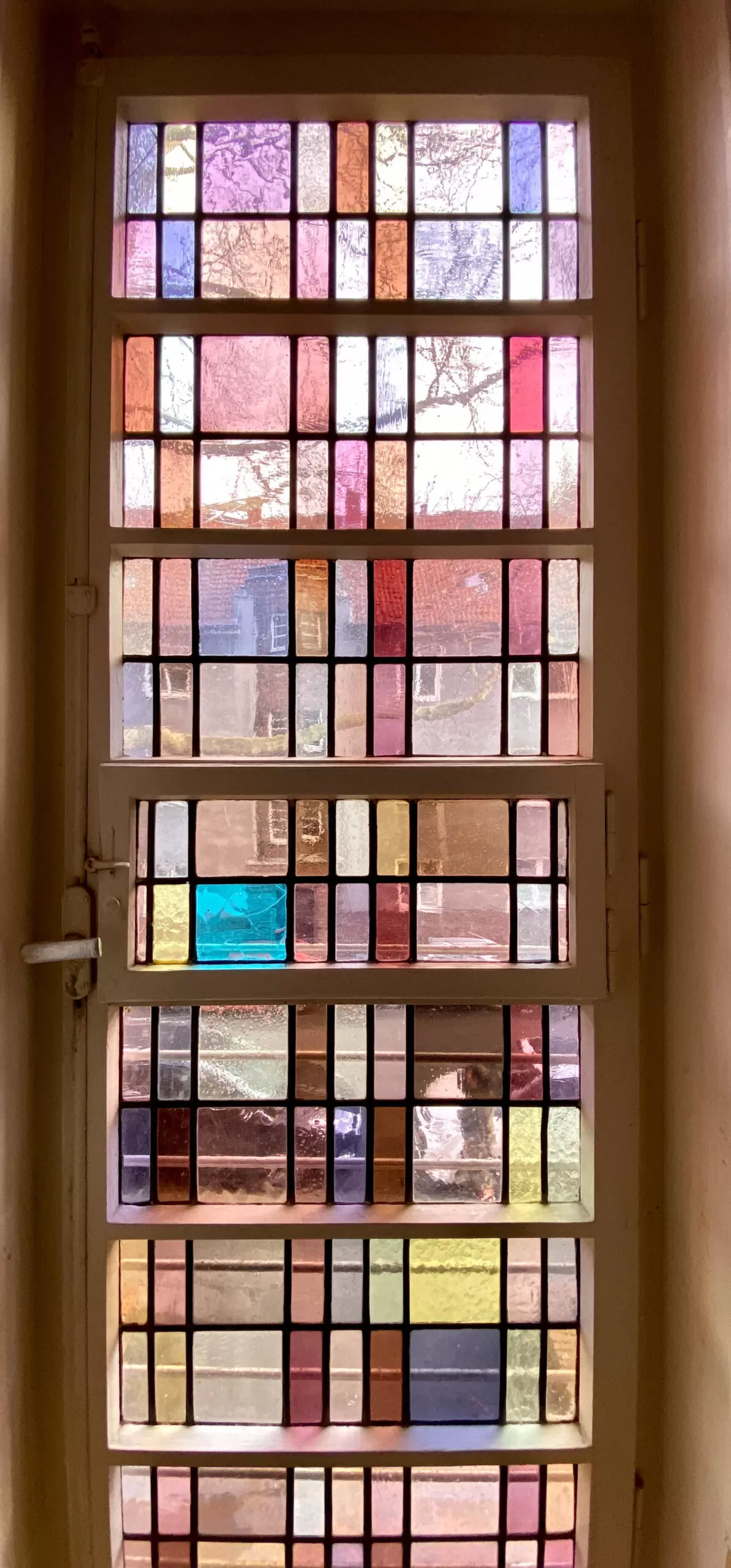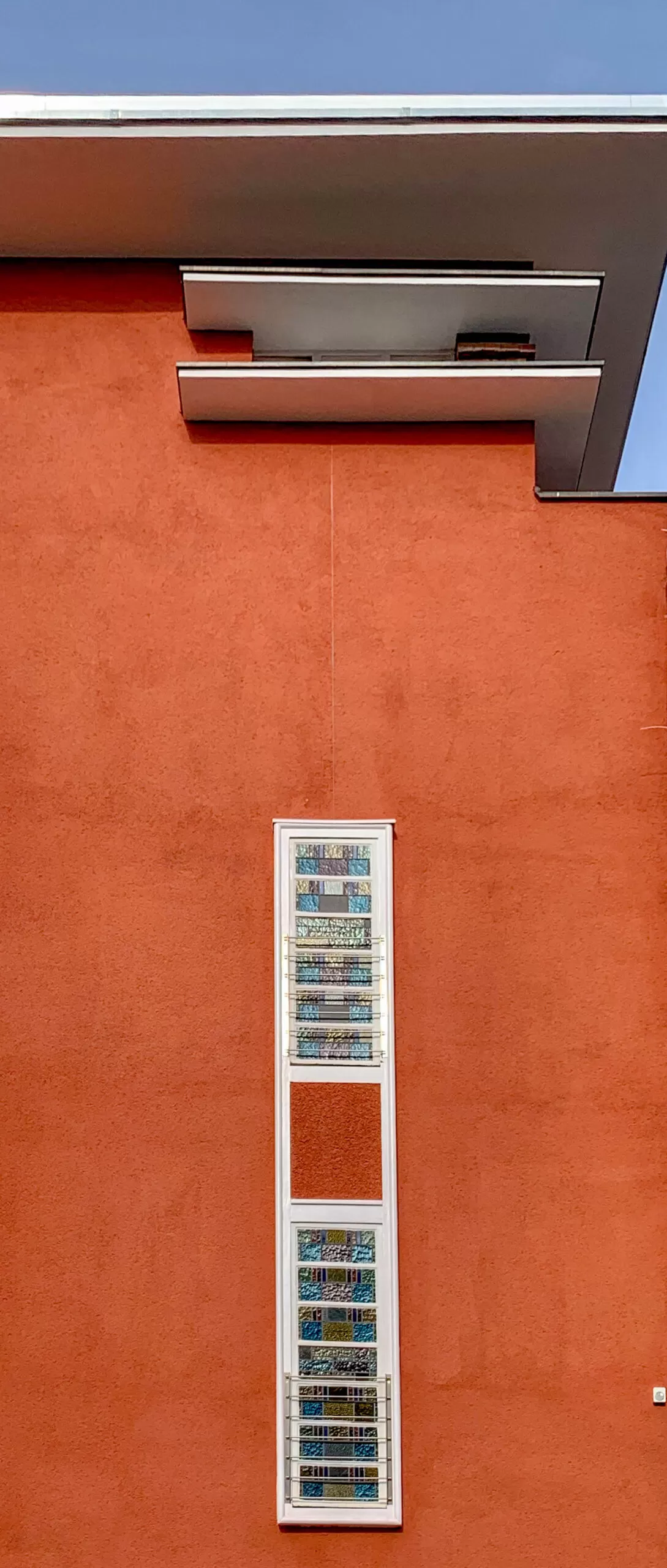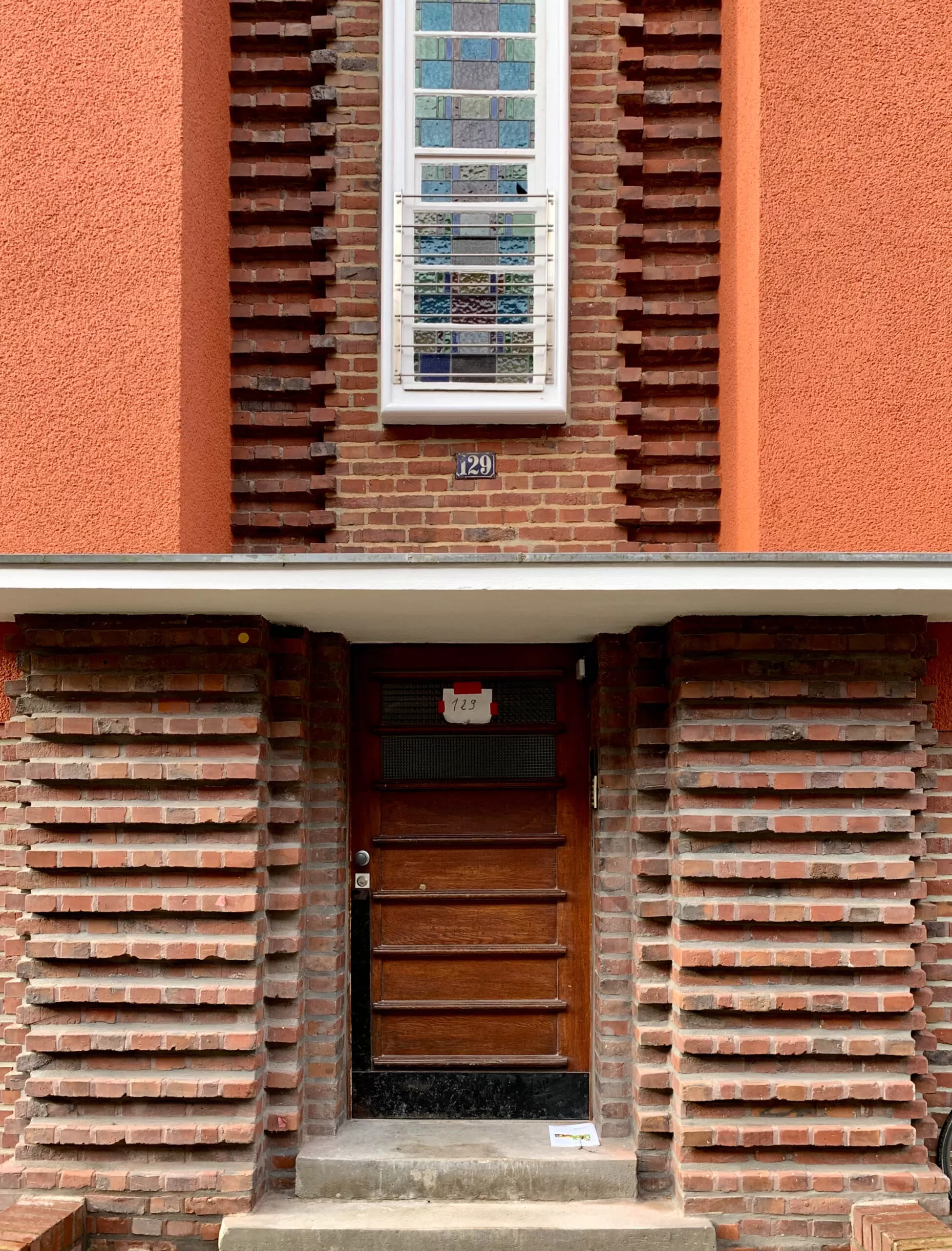1927 – 1928
Architect: Otto Müller-Jena
Alpenerstrasse 26-34, 21-37; Borsigstrasse 15-19; Marienstrasse 123-129, 120-134; Subbelrather Strasse 409; Cologne-Ehrenfeld, Germany
The listed housing estate of Gemeinnützige Wohnungsbau AG (GAG) on Alpener Strasse in Cologne-Ehrenfeld with its clear lines and plastered facades with brick elements was built between 1927 and 1928 according to plans by Otto Müller-Jena.
Architect
Otto Müller-Jena was born in Jena, the son of the optician Karl Friedrich Müller and his wife Louise Christiane Müller.
After completing his education, he settled in Cologne around 1900 as an independent architect and married into the family of architect Heinrich Wiethase on June 26, 1906 in his hometown of Jena through his bride Adelheid Wiethase.
As early as 1903, Müller-Jena was one of the founders of the Cologne chapter of the Association of German Architects (BDA), was its chairman from 1919 to 1924.
Since 1924 he was chairman of the regional district of Rhineland-Palatinate-Saargebiet. Five years later he was appointed as a member of the BDA main board in Berlin.
This commitment was ended in 1934 by the National Socialist Gleichschaltung. In 1950, the BDA appointed him an honorary member.
Housing Estate Alpener Strasse
The aim was to create multi-story apartments in as simple a form as possible.
Despite the very limited budget, the architect Otto Müller-Jena succeeded in realizing a settlement with varied facade design, inner courtyards, stores and social facilities, as well as play and recreation facilities for children.
The first residents of the settlement were working-class families employed in the factories in the immediate vicinity.
All apartments were originally equipped with coal stoves and later heated with electric heaters.
Renovation and Restoration
In 2020, extensive renovation and restoration became necessary.
The housing estate was extended by 105 apartments. For the first time, a heating system was installed, with which the apartments can now be heated in an energy-efficient manner.
Roofs were repaired and insulated, as were the attic floors and basement ceilings.
Facades were cleaned and repaired.
The PVC windows were replaced with wooden mullioned windows in keeping with the historic preservation order.

